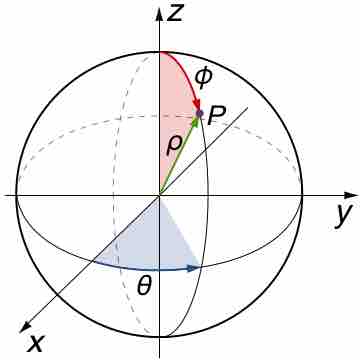When the function to be integrated has a spherical symmetry, it is sensible to change the variables into spherical coordinates and then perform integration.

Spherical Coordinates
Spherical coordinates are useful when domains in
In
Points on
Integrals in Spherical Coordinates
The Jacobian determinant of this transformation is the following:
The
Finally, you obtain the final integration formula: It's better to use this method in case of spherical domains and in case of functions that can be easily simplified, by the first fundamental relation of trigonometry, extended in
Example
Integrate
In spherical coordinates:
while the intervals of the transformed region
Therefore: